| Content | Fender Bassbreaker 15 Electric Guitar Amplifier Head at a Glance:
- Crossing the pond
- Wattage that wants to be cranked
- Onboard extras
Crossing the pond
Many iconic British amps were based on early Fenders, so it's fitting that the Bassbreaker 15 harkens back to these classic designs. The Bassbreaker 15's EL84-based, Class AB power section is the secret to crossing the American/British sound barriers. When cranked, it exudes full-bodied Class AB style with harmonically rich EL84 tones.
Wattage that wants to be cranked
Fifteen watts is often the perfect amount of power. At small live gigs, you can crank it up and not overpower the rest of the band. In the studio, it's low powered enough to get the power section really cooking, giving you amazing breakup and feel. Whenever your power tubes are working that hard, it adds a level of touch sensitivity to your amp's performance - and Sweetwater guitarists know that's often difficult to attain at a reasonable volume.
Onboard extras
Fender added a 3-way Gain Structure Switch that gives the Bassbreaker 15 three boutique voices. Each voice has more gain than the one before, in essence giving you three amplifiers in one. And the XLR output carries a selectable speaker simulator for direct recording or performing. You can also mute the power section to get recording tones in an apartment without waking the neighbors. And the digital reverb adds the ambience you need.
Fender Bassbreaker 15 Electric Guitar Amplifier Head Features:
- 15-watt tube combo amp with a British flavor
- Class AB, EL84 power section adds chime and body
- 15 watts of power is perfect for most gigs, recording, and rehearsal
- 3-way gain structure switch offers different amp voicings
- XLR output with selectable speaker simulation
- Power amp mute allows for silent, direct playing
- Onboard digital reverb
| The design of the HDA range draws upon all of Arcam’s experience as one of the UK’s most respected audio companies, to produce Arcam’s best performing range of audio products yet.
The SA10 is a 50 W class A/B amp with an onboard MM phonostage and DAC. Note, there is no streamer, the Ethernet port is for monitoring and amp control only.
Features
- Extremely efficient class A/B amplification
- 50W of power per channel
- 5 analog inputs including phono
- 3 digital inputs
- 32-bit DAC,Sabre ESS9016K2M
- Full I/P control
Specifications
Continuous power output (8 ohm, 4 ohm): 50 W, 85 W
Phono (MM) input
Input sensitivity (1 kHz): 5 mV
Input impedance: 47 kΩ + 100 pF
Line inputs
Input impedance: 10 kΩ
Digital inputs
DAC chip: ESS9016K2M
Supported sample rates (optical, coaxial): 32-96 kHz, 32-192 kHz (16-24 bit)
Bit depth 16-bit – 24-bit
Preamp output
Output impedance: 230 ohm
Headphone output
Max output (into 600 ohm): 5 Vrms
Output impedance: 1 ohm
Load range: 16 - 2,000 ohm
Dimensions (WHD): 17" x 3.4" x 12.2" (433 mm x 87 mm x 310 mm)
Weight: 18.5 lb
Supplied accessories: Power cord, remote control, 2 x AAA batteries | The Rupert Neve Designs Portico II Master Bus Processor lets you enhance, reshape, and polish your sound to perfection. Whether you want to add finishing touches to your master bus, level out a stereo group, or add new life to mono sound sources, the Portico II Master Bus Processor gives you the compression, limiting, and stereo field manipulation you need. Featuring custom input and output transformers designed by Rupert Neve, the Portico II Master Bus Processor implements the same ultra-smooth Class A signal processing made famous by the 5088 console and the Portico II Channel, as well as 72V topology, which gives it enormous headroom while allowing it to integrate seamlessly with virtually any system. If you’re serious about your sound, then it’s time to ask your Sales Engineer about the Rupert Neve Designs Portico II Master Bus Processor!
Powerful and flexible compression
Both channels of the Portico II Master Bus Processor feature one of Rupert Neve Designs’ most versatile compressors to date. Whether you want to add punch to your mix or smooth out your vocal subgroup, the Portico II Master Bus Processor has the compression you need. Controls for ratio, threshold, attack, release, blend, sidechain highpass filter, limiting, and makeup gain let you dial in the perfect dynamics quickly and easily. Use the two compressors independently, or instantly link them with the push of a button. Variable Silk Red/Blue Texture controls let you add classic Neve harmonic warmth; while a blend control lets you dial in the dry signal for instant parallel processing, so you can get all of the compression you want without losing transients. In addition, the Portico II Master Bus Processor gives you a choice of either vintage-flavored feed-back or modern-sounding feed-forward compression modes.
Transparent, musical limiter that’s effortless to use
Often overlooked at first glance, the Portico II Master Bus Processor’s 1-knob limiter is a powerful, flexible, and remarkably easy-to-use tool that lets you get the most out of the Portico II Master Bus Processor’s compression section. Rupert Neve Designs’ Adaptive Release Technology gives this limiter its unique ability to grab onto fast transients, without smothering the rest of the signal. Plus, you have the option to blend compressed and dry signals together for parallel processing that maintains natural-sounding dynamics without clipping. This gracious behavior means you can set it and forget it, with the added security of knowing your masters will be free from clipping and broadcast-ready.
Sidechain inserts for creative ducking
Every dynamics processor has a sidechain circuit that examines the signal and determines how much the VCA will reduce gain — but not every unit provides access to its sidechain. In compressors without a separate sidechain input, your main input signal is, essentially, compressing itself. With compressors like the one in the RND Portico II Master Bus Processor, you can insert external processing on the sidechain — or introduce a different signal that determines the compression action on the main signal. It’s an incredibly useful feature that lets you, for instance, automatically duck a track to make space for another (very popular for that EDM mix pumping effect). Combined with the sidechain HP filter, it gives you an impressive amount of tonal versatility.
Amazing Stereo Field Editor
Although the Rupert Neve Designs Portico II Master Bus Processor functions wonderfully as a dual-mono processor, it really shines in stereo mode. That’s thanks to its unique Stereo Field Editor. The Stereo Field Editor uses advanced Mid/Side stereo manipulation techniques, allowing you to adjust your stereo bus’s width, depth, and ambience. Beyond widening your stereo image, the Portico II Master Bus Processor can actually bring center-panned instruments out in your mix. That makes the Portico II Master Bus Processor an invaluable tool for mastering, as well as defining the spread of your subgroups during mixdown.
The legend continues
Rupert Neve’s 80 Series consoles had a huge, punchy, and authoritative sound that defined the sound of ’70s rock. From London to New York to Los Angeles and beyond, top studios were installing Neve boards as fast as they could. By 1977, with the introduction of the NECAM automation system, 80 Series boards were the main component of the success formula for any recording studio with world-class aspirations. Mr. Neve’s current company, Rupert Neve Designs, continues to advance the state of the art with cutting-edge products that sound incredible and intelligently address the challenges of the digital age. With your Rupert Neve Designs Portico II Master Bus Processor from Sweetwater, the legend continues.
Rupert Neve Designs Portico II Master Bus Processor Features:
- Powerful 2-channel compressor/limiter/stereo field manipulator
- Custom input and output transformers designed by Rupert Neve
- Full compression sections for both channels, including attack, release, ratio, and threshold controls
- Sidechain inserts and highpass filters for both compressors
- Feed-back/Feed-forward switch lets you select between vintage-style and modern compression modes
- Silk Texture control with Red/Blue modes for classic Neve harmonic warmth
- Blend controls allow you to mix dry signal back into your compression, preserving transients while adding punch
- Simple and highly musical 1-knob limiter with Adaptive Release Technology allows for brickwall limiting that doesn’t distort or affect signal under the threshold
- Stereo Field Editor section includes independent level and EQ for width and depth, allowing you to dial in the perfect stereo field
| Features
- Dual mono construction
- High-end ESS Sabre ESS9038 dual DAC
- Proprietary clock circuity design
- Organic polymer capacitors and thin film miniMELF resistors
- MQA hardware decoding
- DSD64, DSD128, DSD256 & DSD512 (DoP, DSD512 native)
- Up to 24bit/192kHz for optical & coax inputs
- 8 selectable digital filter characteristics
- 1 proprietary optimum transient digital filter
- Headphone output on the front (6.3mm)
- Synchronization of all internal oscillators
- Jitter as low as 100 Femtoseconds!
- Gold plated four-layer PCB
- Full alu/metal sandwich casing in silver or black
Technical
| Digital inputs |
1x USB (B), 1x Co-axial (RCA), 1x Optical (TOSLink) |
| D/A-converter |
2x ESS9038Q2M 32-bit |
| USB |
up to DSD512 (DSD1024), PCM up to 32b/768kHz |
| Optical |
PCM up to 24b/192kHz |
| Coaxial |
PCM up to 24b/192kHz |
| Filter settings |
7 different selectable on front |
| Frequency response |
20 Hz - 20 kHz |
| Analogue outputs |
6.3mm Headphone (front), 1x Variable Out (RCA |
| Output voltage |
2.05 Veff |
| Minimal recommended headphone impedance |
8 Ohm |
| Headphone output power |
6.6 mW / 600 Ohm; 68 mW / 32 Ohm |
| THD |
0.0003% @ 0 dB, 2V RMS, 1 kHz |
| Dynamic range |
124 dBA |
| Outboard Power supply |
5V/1A DC (included) |
| Dimensions W x H x D |
103 x 37 x 122 mm (including knob and connectors) |
| Weight |
366 g (without power supply) |
|
NAD has a distinct reputation for creating some of the best performing budget amplifiers of all time. The lineage is impressive, all the way from the 3020 of 1978 to the current C 328, with many “Best Amp” awards and five-star reviews along the way. The C 316BEE lived up to expectations, garnering multiple accolades including an EISA award for ‘Best Product 2008-2009’ and top recommendations from the world’s leading audio publications.
With the resurgence of vinyl, NAD decided to update the design by including its highly acclaimed RIAA phono stage. This sophisticated circuit combines low noise with high overload margins to eliminate noise and distortion. RIAA equalization is extremely accurate (a rarity at this price) and there is even an infrasonic filter to reject airborne vibrations that can cause parasitic feedback.
Features
- PowerDrive
- 5 line-level inputs
- MM phono input for vinyl
- Front-panel input for portable media players
- Bass and treble controls
- Tone defeat
- Headphone output
- IR remote control
- Multi-way speaker binding posts
- Gold-plated RCA jacks
- Toroidal power transformer
- <0.5W standby consumption
Specifications
Continuous output power: 40 W
Damping factor: >200
Dimensions: 17-1/8" x 3-9/16" x 11-1/4"
Weight: 12.1 lb
| This is the product to get if digital setup is confusing or overwhelming. Just add a power amp and speakers for a fully functional streaming platform with one of the neatest most intuitive manufacturer apps out there: BluOS.
A Sabre DAC ensures detailed and musical output, and the NAD C 658 also features Dirac room correction. And yes, it'll do the "full unfold" of all MQA content.
Features
- BluOS Network Streaming with MQA Decoding
- ESS Sabre DAC
- Dirac Live Room Correction*
- Gigabit Ethernet
- Dual Band Wi-Fi ac/n
- 2-way Qualcomm aptX HD Bluetooth
- 2 x MDC Slots for Future Expansion
- MM Phono Input
- 2 x Line Inputs
- 2 x Optical Inputs
- 2 x Coax Inputs
- Balanced Preamp Output
- Preamp Output
- Stereo Subwoofer Output
- High Current Headphone Out
- USB socket for adding optional wireless output module
- IR In with Learning Function
- Trigger Out/In
Specifications
Supported audio file formats: MP3, AAC, WMA, OGG, WMA-L, ALAC, OPUS, MQA, FLAC, WAV, AIFF, Supports converted DSD playback via the BluOS desktop app (only)
Native sampling rates: Up to 32 bit/192 kHz
BluOS
Supported operating systems: Plays music from network shares on the following desktop operating systems: Microsoft Windows XP, 2000, Vista, 7, 8 to current Windows Operating Systems and Mac OS X versions
User interface mobile operating system: luOS – Free Android and iOS App available online at Google Play and Apple App store
Supported cloud services: Spotify, Amazon Music, TIDAL, Deezer, Qobuz, HDTracks, HighResAudio, Murfie, JUKE, Napster, Slacker Radio, KKBox, BugsFree internet radioTuneIn Radio, iHeartRadio, Calm Radio, Radio Paradise
Bluetooth: Bluetooth aptX HD wireless built-in, two-Way
Network connectivity: Gigabit Ethernet RJ45, WiFi 5 (802.11 ac/n)
Dimensions (WHD): 17-1/8" x 3-15/16" x 16"
Shipping weight: 22.3 lb
|





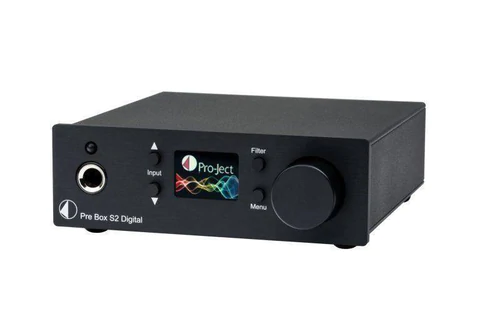





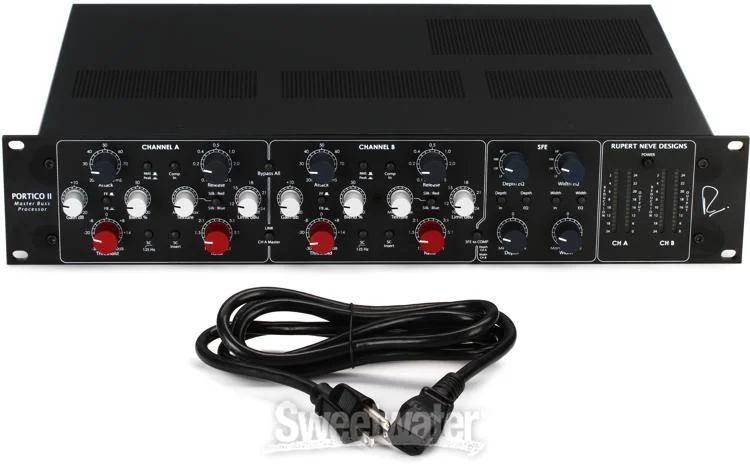
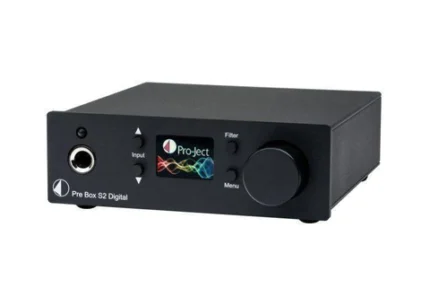



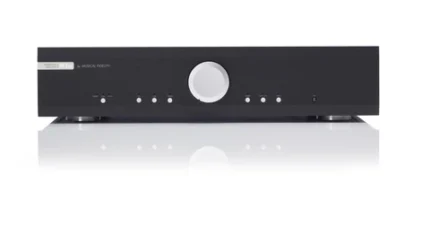
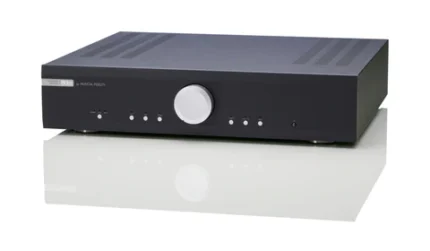




Reviews
There are no reviews yet.